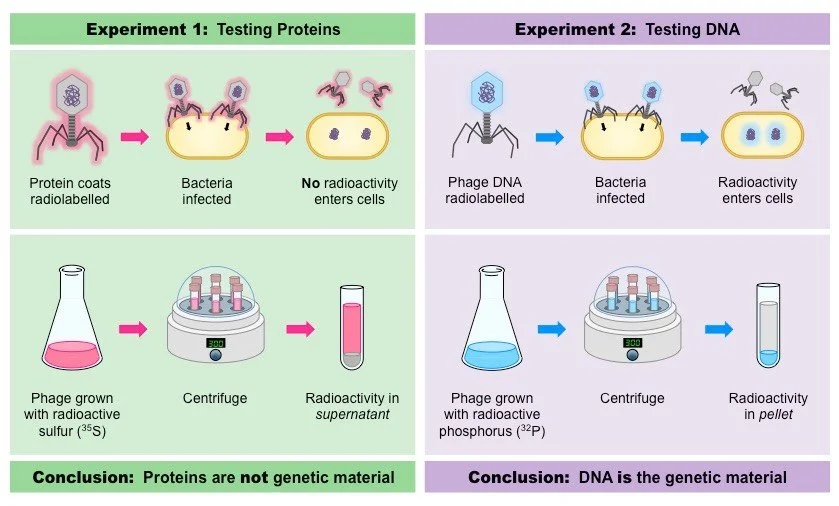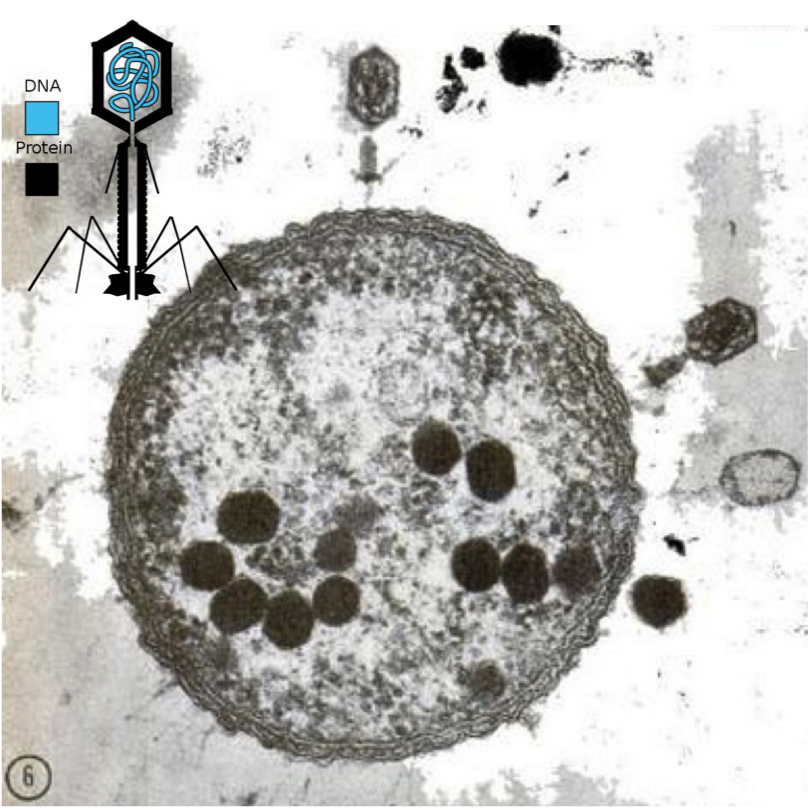What did the experiment look like?
The Big Question
Hershey and Chase wanted to determine whether DNA or protein was the genetic material that bacteriophages used to infect bacteria. To do this, they designed a clever experiment using radioactive markers.
How Did They Do It?
Here’s how the experiment worked:
Radioactive Labeling: Hershey and Chase prepared two batches of bacteriophages:
One batch had DNA labeled with radioactive phosphorus-32 (32P), because DNA contains phosphorus but no sulfur.
The other batch had protein labeled with radioactive sulfur-35 (35S), because proteins contain sulfur but no phosphorus.
Infecting Bacteria: The two types of labeled phages were used to infect separate batches of bacteria. This allowed the researchers to track which part of the phage entered the bacteria.
The Blender Step: After allowing the phages to infect the bacteria, Hershey and Chase used a kitchen blender to shake the mixture. The blender separated the phage protein coats from the surface of the bacterial cells without damaging the cells themselves.
Centrifugation: The mixture was then spun at high speeds in a centrifuge. This step separated the heavier bacterial cells, which formed a pellet at the bottom of the tube, from the lighter protein coats, which remained in the liquid supernatant.
The Results
32P (DNA): Radioactive phosphorus was found inside the bacteria (in the pellet), proving that DNA had entered the cells.
35S (Protein): Radioactive sulfur was found in the supernatant, showing that proteins did not enter the cells.
These results clearly demonstrated that DNA, not protein, is the genetic material.

